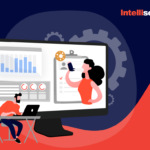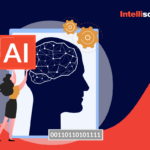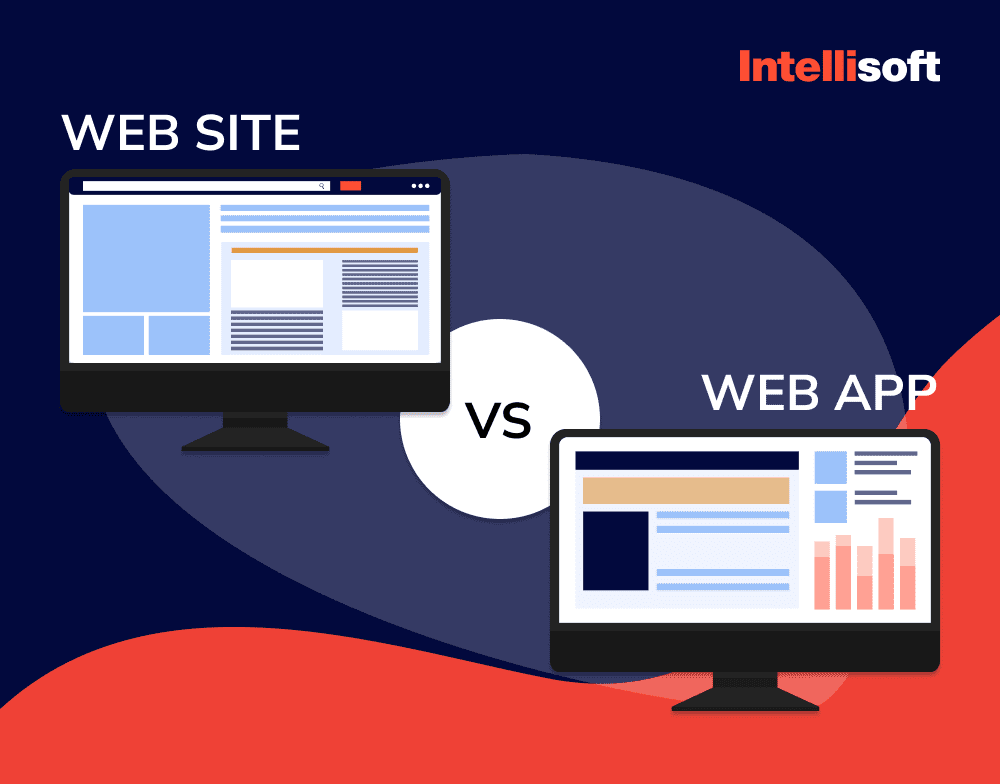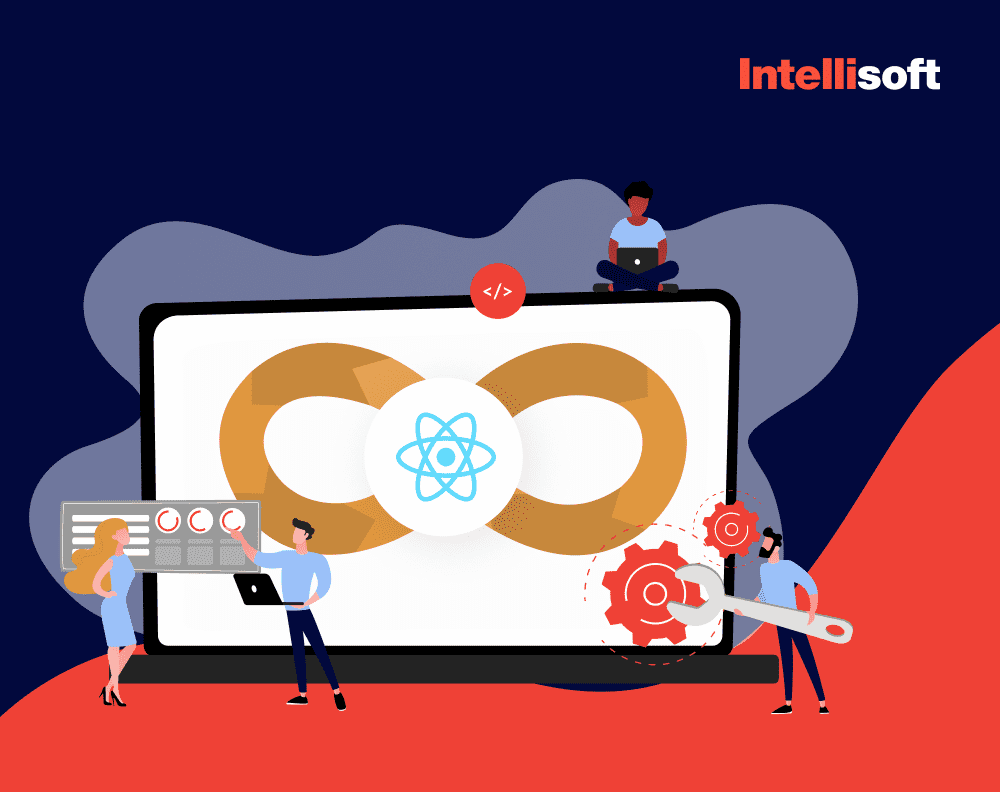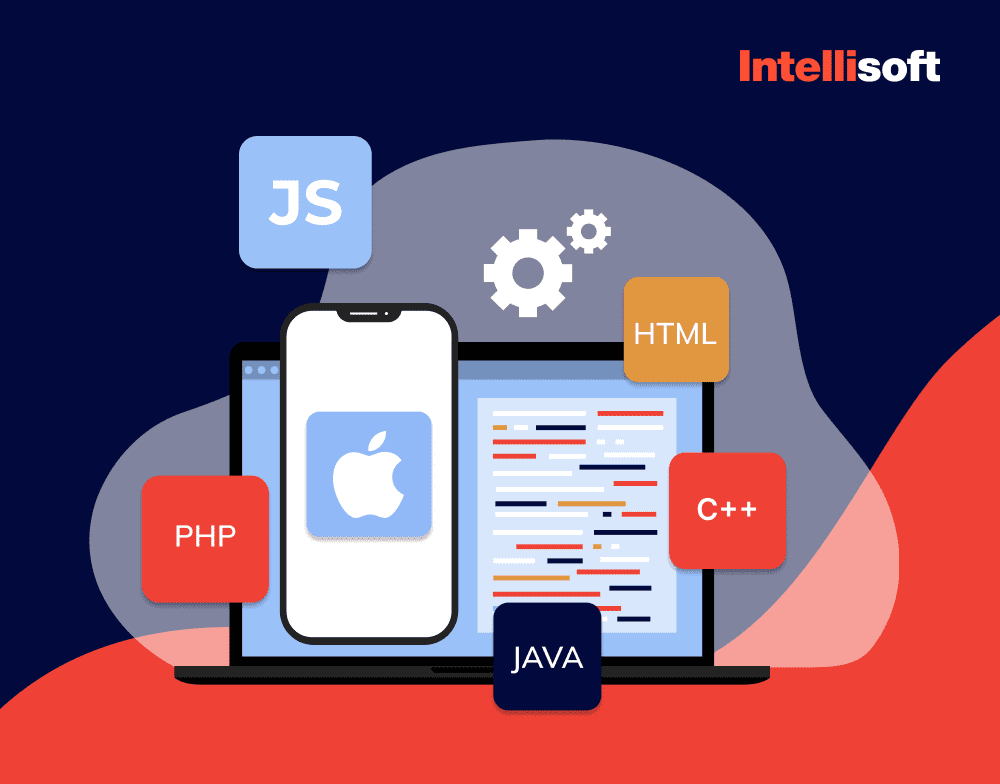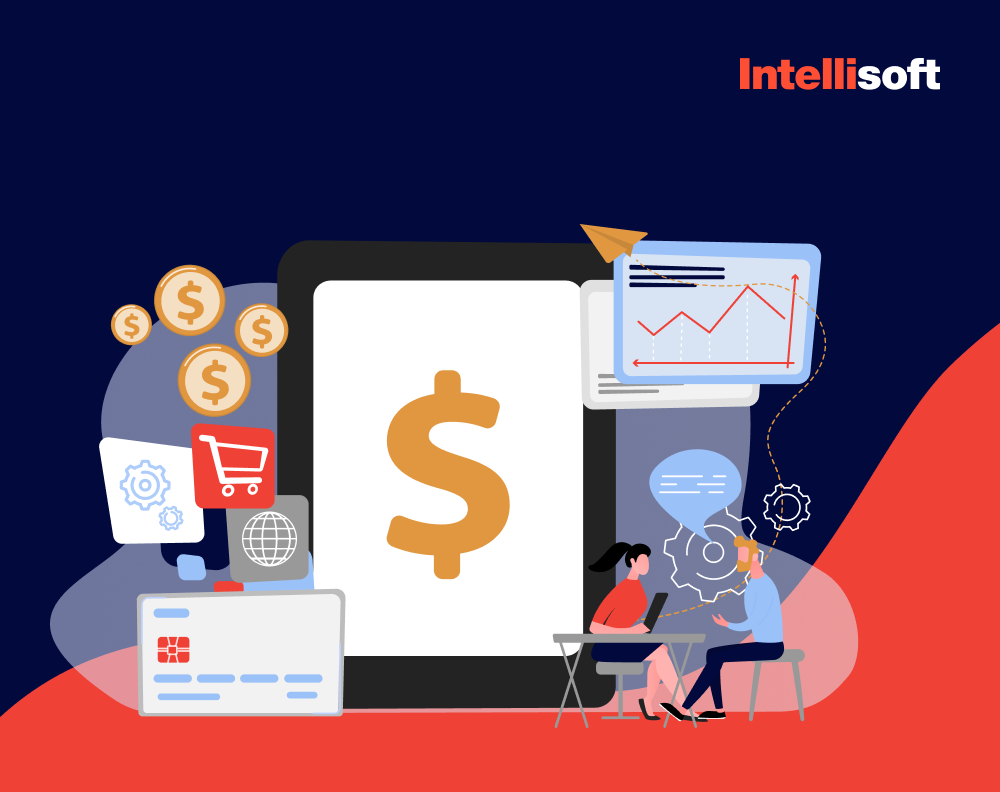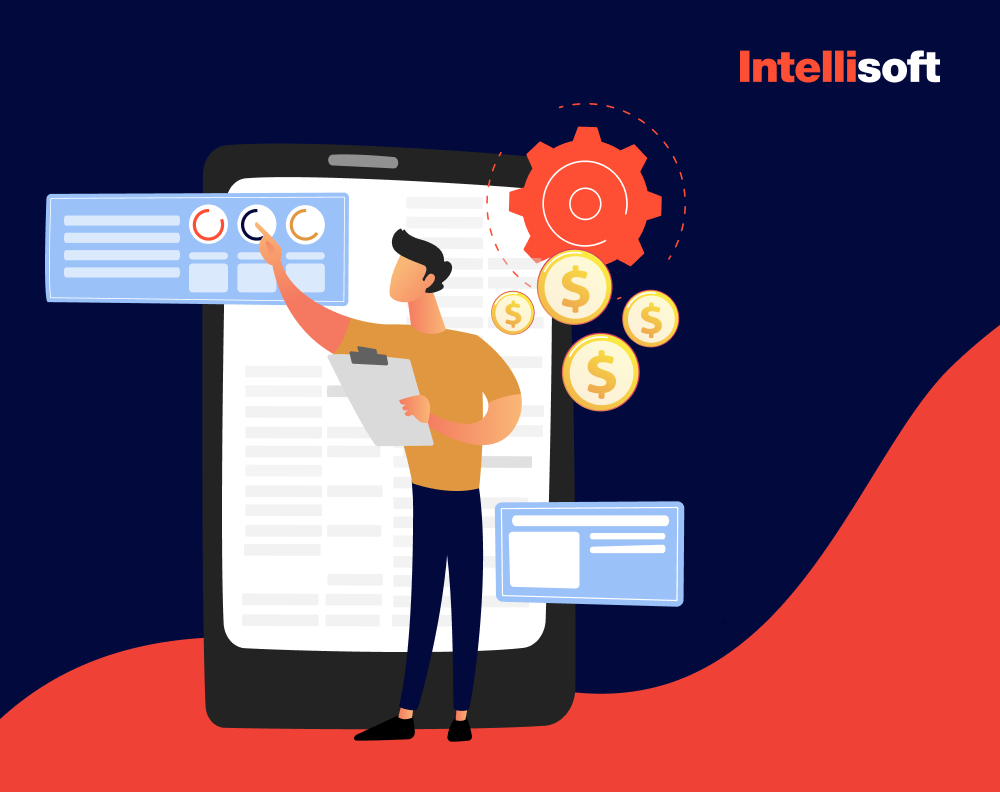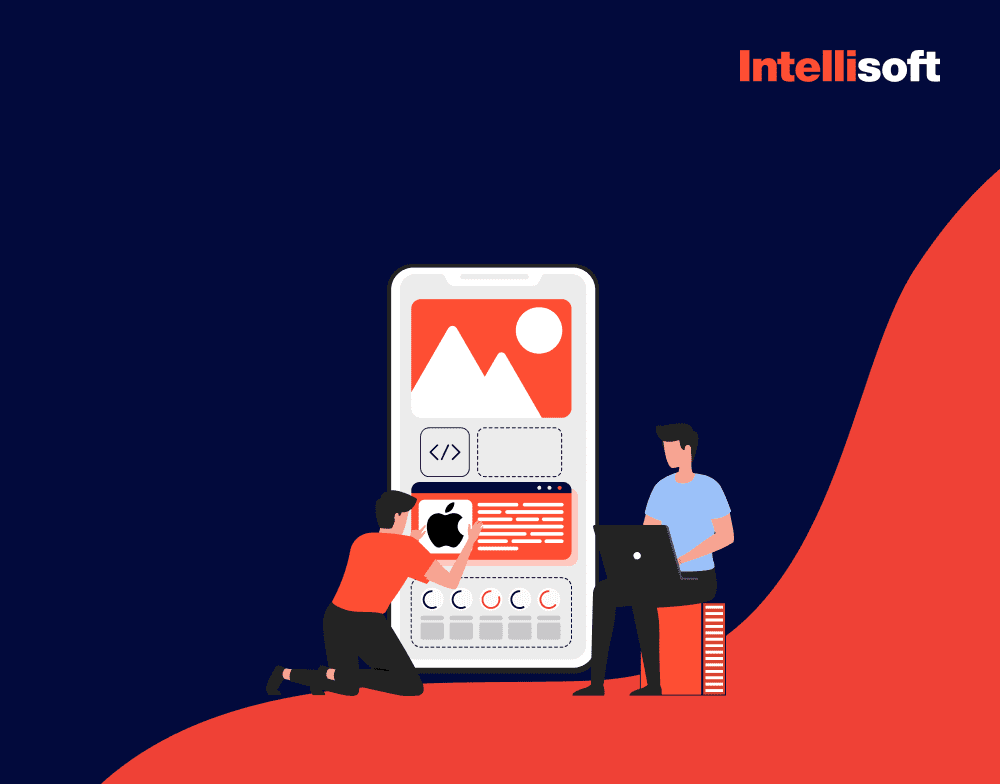Imagine you came up with a brilliant idea and decided to build a mobile app. You invested a lot of time, effort, and resources and finally released the application to the world. But you soon realize that just releasing the app is not enough. It’s essential to have an extensive app maintenance plan to keep it relevant, bug-free, and secure.
Mobile app maintenance is crucial to running your application smoothly and improving over time. Regular maintenance can decrease the number of uninstalls, add more users, and retain existing ones. Scaling the application is essential to keeping up with the competition and staying ahead of the game. Neglecting maintenance after mobile app development may make your product obsolete and, ultimately, a commercial and technical failure.
One of the most critical questions that pops up while thinking about application maintenance is how much it costs. This article will detail the app maintenance cost, its importance, types of app maintenance, and more. So, let’s discover how it can help your app thrive.
Table of Contents
Importance of Maintaining an App
In today’s world, mobile applications have become an integral part of our daily lives. They help us stay connected, entertained, and productive. However, with over 2.65 million apps available in Google Play, it’s easy for a new product to get lost in the crowd. Once the initial hype dies down, user activity tends to decrease, and the application may become an afterthought.
To prevent this from happening, app developers need to update their apps with new and improved features regularly. This approach keeps the application relevant and shows the users that the business is active and committed to providing them with the best possible experience.
It’s crucial to thoroughly test the app before release to ensure no bugs or glitches. However, some issues may still arise even with the most rigorous testing. Addressing these issues promptly and efficiently can prevent negative feedback and earn the trust of the user base.
You should also inform users when certain milestones are reached. These improvements show transparency, breathe new life into users, and increase engagement.
When you maintain your app, you provide another opportunity for consumers to interact with it, putting your brand back at the forefront of their minds. By updating your mobile application and sending an appropriate push notification, you can inform users of the changes, new features, and functionality improvements.
The main reason for app maintenance is to protect against vulnerabilities. Earlier software versions may still be prone to the same errors and weaknesses in the code that malicious attackers and cybercriminals can exploit. Unfortunately, while developers are constantly working to fix loopholes in their software, hackers are also continually looking for new security vulnerabilities to exploit. Therefore, keeping your systems up-to-date with the latest software versions and security patches is essential to minimize the risk of cyber-attacks and data breaches.

Delivering Better User Experiences
It’s important to note that there isn’t a hidden or undisclosed tactic that will guarantee the success of your app. To ensure its success, you must prioritize providing an exceptional user experience. Investing in improving the UX of your application will go a long way in helping you:
- Develop strong relationships with users
- Gather feedback for better reviews
- Improve retention rates
- Maintain customer loyalty
Investing the necessary effort to provide users with exceptional experiences is crucial.
Keeping Mobile Apps Updated and Reducing Uninstalls
As a business owner, it is crucial to invest in mobile app maintenance to ensure that it remains up-to-date. Understanding the preferences and needs of your users is key to achieving this.
According to a 2020 report by Statista, the average application uninstall rate in the United States was a staggering 37%. Over one-third of the users who download an app uninstall it.
Furthermore, most web app uninstalls (71%) are attributed to excessively irritating notifications. This data highlights the importance of balancing keeping your users informed and overwhelming them with messages.
It is crucial to remember that users are discerning and have high expectations regarding functionality and benefits. If your application doesn’t meet their standards, they will not hesitate to uninstall it. Therefore, it is essential to monitor user feedback and preferences regularly and update your app accordingly.
If your app’s rankings drop, the application stores may remove it from their listings. Updating your app with innovative features and APIs can help prevent this from happening. Keeping your app up-to-date and user-friendly ensures it remains relevant and valuable, increasing user retention and engagement.
Increased ROI in the Long Run
In today’s digital age, mobile applications have become integral to our lives. An app’s success is not only dependent on its initial launch but also on its continuous maintenance and updates. Keeping your application updated at all times can reap several benefits, such as ensuring maximum return on investment (ROI) and attracting new users. However, have you ever wondered how app maintenance can help achieve these goals?
Well, here is how it works. Application maintenance refers to fixing bugs and resolving issues arising during regular usage. By continuously maintaining your application, you can spread the costs of fixing bugs over a long-term period. This approach means that you don’t have to worry about spending a large sum of money all at once to fix issues that may arise. Instead, you can address them gradually, reducing your overall maintenance costs.
Moreover, the maintenance app ensures that it stays up-to-date with the latest technologies and security measures, which can attract new users and increase your ROI. In other words, by keeping your application well-maintained, you can ensure that it provides your users with a seamless and hassle-free experience, which can help you achieve your business goals.
Securing Your Mobile App from Cyber Threats
As mobile applications continue to gain popularity, prioritizing cybersecurity is becoming increasingly important. Malicious hackers are constantly looking for vulnerabilities to exploit and new methods to compromise sensitive data. It is crucial to regularly perform maintenance on your applications and update them with the latest security protocols to protect yourself. This approach will help safeguard your personal information and ensure your mobile experience remains safe and secure.
How Often Should the App Be Updated?
Mobile app maintenance service frequency is a crucial aspect of mobile app development that can significantly impact user satisfaction and overall success. While there are no hard and fast rules regarding how often an app should be updated, some general recommendations and industry practices can guide developers.
For top-performing applications, updating every 20 to 40 days is generally considered optimal, as it balances keeping the application fresh and avoiding overwhelming users with frequent updates. However, it’s worth noting that more frequent updates can be associated with success for certain types of apps. For instance, over half of the 100 most successful apps on the App Store update every nine days or less, indicating that frequent updates can be a useful strategy for keeping users engaged and satisfied.
In general, developers should aim to release updates at least once a month. This approach ensures the application remains functional and up-to-date with the latest technologies and security measures. Besides, regular updates can help introduce new features and bug fixes, improving the user experience and enhancing the app’s overall performance.
That said, the optimal frequency of updates will depend on various factors, including the nature of the app, user feedback, and the type of updates being released. Ultimately, developers should aim to balance keeping the app fresh and functional and avoiding overwhelming users with too many updates.
Types of App Maintenance
If you plan to take responsibility for maintaining your app, it’s essential to understand the various practices for app maintenance. This knowledge will help you determine the appropriate course of action in response to specific situations.

Perfective maintenance
One of the most critical aspects of developing an application is keeping up with users’ ever-changing expectations and requirements. Failure to do so can decrease user engagement and, ultimately, lead to a loss of market share to competitors.
To avoid such a scenario, it is essential to engage in perfective maintenance, which involves analyzing user behavior and gathering feedback to identify improvement areas. This process can be facilitated through various quantitative and qualitative UX research methods, such as surveys, in-depth interviews, or user testing.
The ultimate objective of perfective maintenance is to strive for perfection by providing users with a consistently seamless experience. This approach requires a relentless focus on the user and a willingness to make necessary updates and changes to ensure that the app meets their evolving needs and expectations.
Preventive maintenance
Preventive maintenance, also known as proactive maintenance, is a software maintenance technique that identifies and eliminates potential problems before they occur. This process involves regular testing and analysis of the application’s code by the developers, who work on fixing any bugs or issues that could potentially arise.
Doing so can ensure your code is fully optimized, secure, and up-to-date, enhancing your application’s overall performance. Furthermore, preventive maintenance can help you reduce the complexity of your application by streamlining its operations and ensuring that it remains compatible with the latest software technologies.
Adaptive maintenance
The tech industry constantly evolves in today’s fast-paced world, with new breakthroughs and innovations emerging daily. What was once a groundbreaking technology may quickly become obsolete, and staying ahead of the curve is crucial to remain relevant in the market.
Regularly adapting your digital product to current trends is essential to keep up with the changing landscape. This approach may involve adjusting the code or adding new features to keep your application up-to-date with the latest industry standards. It may also require completely transforming the software environment, including operating system or hardware changes.
Preparing to embrace these potential changes is vital to ensure your product remains competitive and meets your customers’ needs.
Emergency maintenance
It’s important to know that mobile applications can encounter many bugs and critical errors at any moment. These issues can arise suddenly, without any prior indication, and can cause significant damage if not addressed promptly.
To prevent such disasters, it’s essential to consistently monitor your app’s performance and watch for any anomalies that may indicate a problem. Once an issue has been identified, it’s crucial to act quickly and efficiently to resolve it.
However, fixing the issue is only half the battle. Thorough testing is equally influential in ensuring the solution is stable and reliable.
Corrective maintenance
Corrective maintenance is a crucial aspect of software development that addresses any residual bugs or errors that may have been left behind during the design or coding phase. As a responsible software engineer, you take complete ownership of identifying and repairing defects that can negatively impact the software’s performance. This approach can include fixing minor glitches and resolving major issues that may cause the software to malfunction. The ultimate goal of corrective maintenance is to ensure that the software functions optimally and provides users with a seamless experience.
Activities Involved in App Maintenance
To ensure that mobile applications remain relevant, reliable, and functional for an extended period, developers should provide comprehensive app maintenance services. Here are the most significant of them:
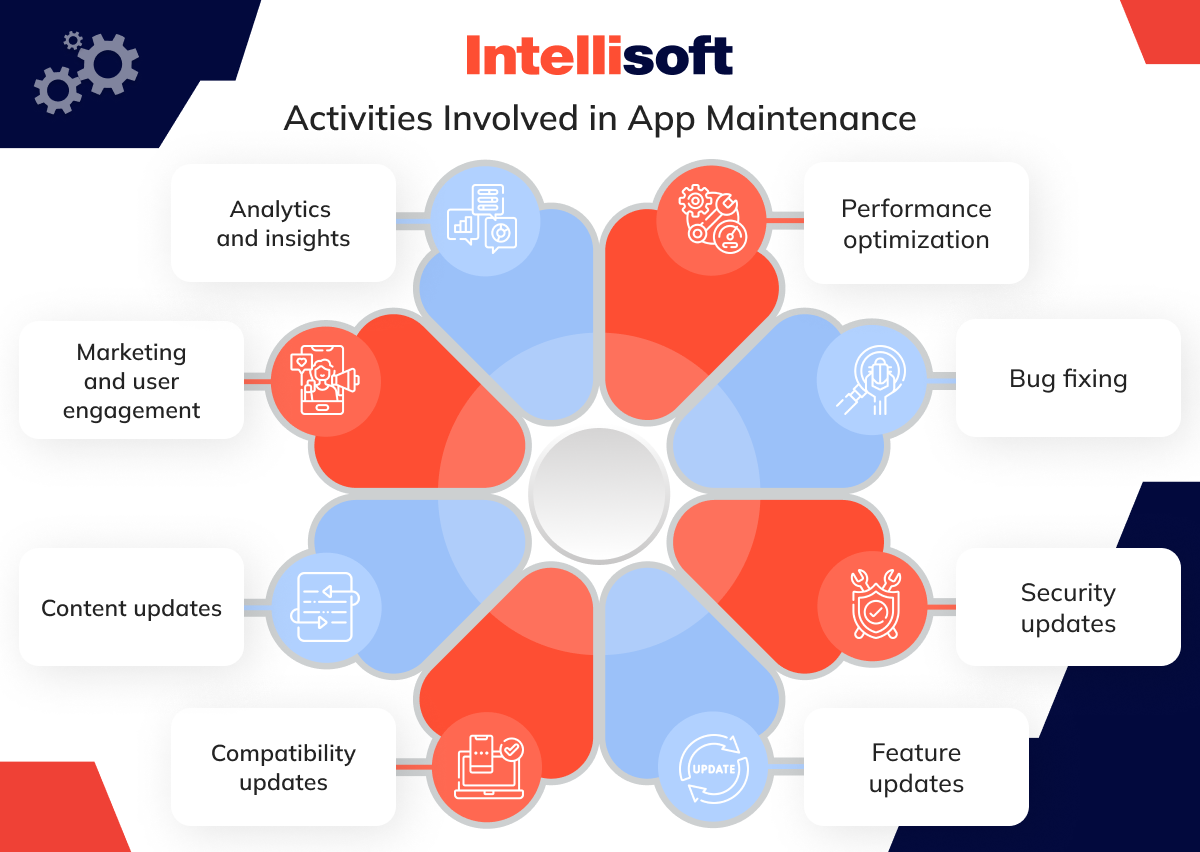
- Performance optimization. Optimal application performance is crucial to keeping users engaged and preventing uninstalls. Improving speed, stability, and resource efficiency are key factors in achieving this goal.
- Bug fixing. A crucial aspect of ensuring a seamless user experience is promptly and efficiently dealing with any reported issues, defects, or crashes. Troubleshooting such bugs can be challenging, but it is essential to maintain the application’s smooth functioning and prevent users from encountering any inconvenience. In fact, addressing such issues can even lead to a significant increase in active users, as with the Grill’d app.
- Security updates. Security patches are essential for fixing vulnerabilities in software systems, protecting against cyber attacks and unauthorized access, and safeguarding sensitive data. Upgrading to the latest version with security patches is recommended to ensure data security.
- Feature updates. Regularly add new features and functionalities to the product to keep users interested and attract new ones. This approach enhances the user experience and leads to the product’s success.
- Compatibility updates. Ensuring that the application is compatible and optimized for the latest operating system versions and hardware advancements, thus providing users with a seamless and efficient experience.
- Content updates. To maintain a successful app, it’s crucial to keep its content engaging, relevant, and up-to-date. Consistently refreshing and refining the content can enhance user engagement, retention, and overall satisfaction with the app.
- Marketing and user engagement. Promoting a product or service and communicating consistently with its users is crucial to maintaining its growth and success.
- Analytics and insights. Monitoring user interaction and app performance can give valuable insights for future updates and improvements. Developers who provide an app maintenance service can make informed decisions, resulting in a better overall user experience.
Related articles:
- 6 main trends in the development of mobile applications in 2022
- Backend Mobile App Development: A Comprehensive Guide
- What Is a Cross-Platform App and Why to Choose It?
- Web Development vs Mobile Development: What to Choose?
- Building a Mobile App From Scratch
Step-by-step Mobile App Maintenance Process
It is essential to follow steps to ensure that your maintenance cycles are completed on time and your apps are updated predictively. Doing so can reduce the frequency of maintenance cycles and keep your apps up-to-date. Let’s take a look at steps of mobile app maintenance services together.
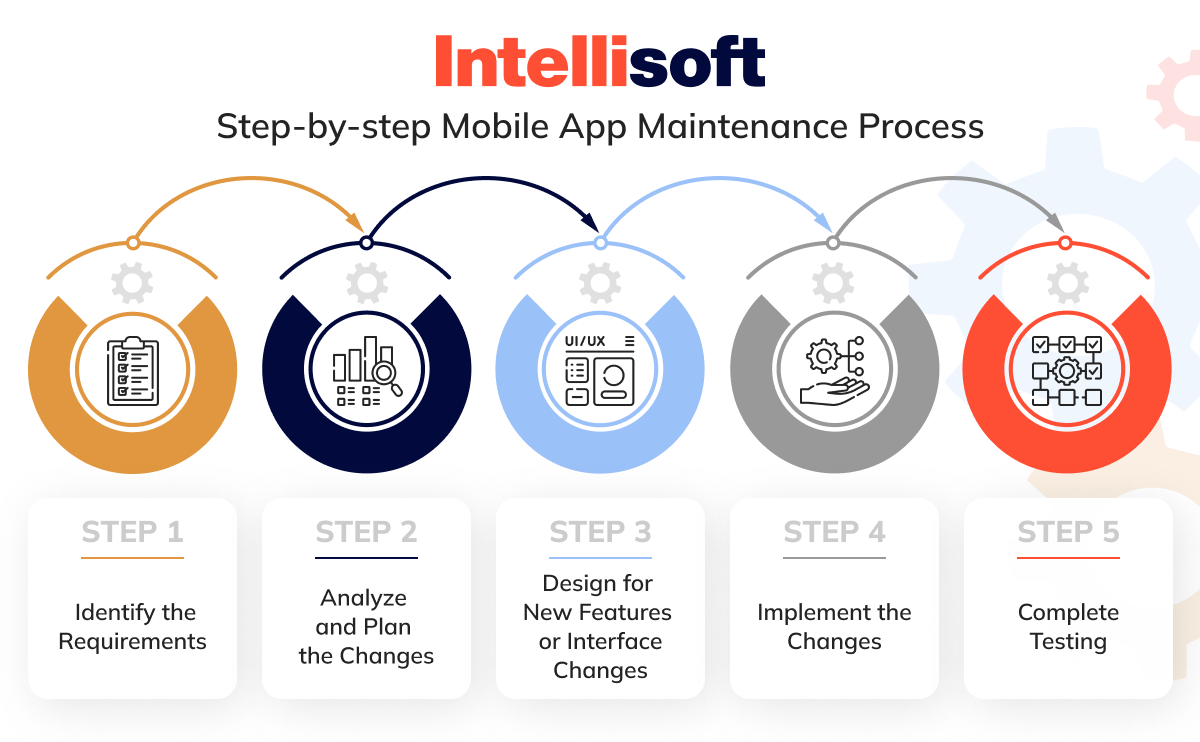
Step 1. Identify the Requirements
When planning a maintenance cycle for your application, it’s crucial to identify the changes that need to be made. This approach allows you to categorize the activity into the appropriate maintenance type. For instance, if you aim to address bugs and other issues, you would likely perform corrective maintenance.
On the other hand, if you’re looking to add new features or improve existing functionality, this would fall under the umbrella of regular maintenance. You can determine the best methods and strategies for carrying out the work according to your specific requirements by identifying the appropriate maintenance type.
Step 2. Analyze and Plan the Changes
After compiling a list of all the necessary modifications required during maintenance, it is essential to evaluate their feasibility. This step is crucial to ensure your team can accomplish the proposed changes satisfactorily. A thorough analysis of every detail is necessary to determine the required expertise and resources.
Once you have established the practicality of each modification, the next step is to discuss it with the team to plan the maintenance activities. Proper planning ensures app maintenance tasks are completed efficiently and on time. With a well-planned approach, your team can successfully implement the changes and ensure your systems continue functioning smoothly.
Step 3. Design for New Features or Interface Changes
The design stage is essential for adding new features or changing your system. This stage becomes particularly crucial when you consider interface or visual changes. Before implementing, you must clearly understand how the changes will look and feel. Implementing these changes efficiently without understanding the interface or design is impossible.
Moreover, suppose you are planning to change the system’s architectural structure. In this case, undergoing the design stage becomes even more critical. Making architectural changes without proper planning can lead to inefficiencies, redundancies, and inconsistencies that can impact the system’s overall performance.
Step 4. Implement the Changes
After making the required modifications, it is crucial to implement them during the pre-production phase. To do this, ensure that the changes are committed correctly. You should identify the exact specifications and implement the changes accordingly. These steps will help ensure your modifications are correctly integrated into the pre-production stage.
Step 5. Complete Testing
After identifying and applying the necessary modifications to the code, commit the build for testing. The next step is to have the QA engineers evaluate the changes to ensure they meet the required quality standards and usability.
Moreover, the team should assess whether the code and interface align with the application’s maintenance goals. For instance, if the goal is to enhance the application’s functionality, the testing engineer should verify that the changes have resulted in the desired improvement.
How Much Does App Maintenance Cost On Average?
When it comes to maintaining an app, several costs must be considered. One significant factor is server management, which involves maintaining, updating, and securing the server hosted by the app. Another crucial aspect is push notifications, which send timely alerts to users, and payment gateways, which facilitate transactions within the app.
Once your application goes live on Google Play or Apple App Store, keeping track of key metrics such as Daily Active Users (DAU) and Monthly Active Users (MAU) is vital. DAU represents the number of application installs and engaged users per day, while MAU provides a more comprehensive view of user engagement over a month. High DAU and MAU numbers generally indicate that your product is performing well.
The maintenance phase is a crucial part of the application development lifecycle after development and publication. It involves fixing bugs and glitches, updating the product to keep up with the latest technologies, and adding new features. This phase also incurs additional costs, up to 50% of the total development cost during the first year. However, this figure decreases to about 15-25% in the subsequent years.
Moreover, mobile app maintenance cost increases slightly if your app supports multiple operating systems, such as Android and iOS. As a rule of thumb, application owners should initially budget around $2,000 to $2,500 monthly to keep the app running optimally.
A general guideline is to allocate 20% of the initial development cost for maintenance. So, if your development costs were $200,000, you should expect to spend about $40,000 per year on maintenance.
Let’s look at some common recurring expenses during the maintenance phase:

When considering the cost of app maintenance, remember these additional items:
Hosting
App maintenance cost includes server costs for mobile apps and app hosting prices. To calculate the associated hosting costs, you need to consider what kind of server resources your product needs based on the type of application data. You may need to upgrade your server resources to accommodate more significant amounts of data, which could increase expenses.
The server cost can range from $70 to $320 per month, depending on the content, the number of active users, and projected growth. Cloud-based hosting options like AWS can be less expensive as you only pay for what you use, and the maintenance cost is lower.
Analytics
Analyzing and monitoring the performance of your mobile app is crucial for ensuring its smooth functioning. This approach involves keeping track of bugs, crashes, and other glitches that may impact user experience. With the help of tools such as Google Analytics, you can gain valuable insights into the performance of your app to make informed decisions.
Understanding your users’ preferences and expectations is important for making quick and effective decisions. While many free tools are available, more advanced tools that provide crucial insights may come at a cost. Therefore, it’s essential to carefully plan and choose the right tools to meet your business’s specific needs.
It’s worth noting that monitoring and decision-making require significant time. So, allocating your resources carefully is vital to achieve the desired outcomes. With a strategic approach, you can leverage the right tools and insights to improve the performance of your mobile app and deliver a seamless user experience.
Bug Fixing and Updates
Regular software updates play a significant role in maintaining user satisfaction and resolving any issues. If you look closely at any mobile or web application, you’ll notice that developers release regular updates to fix bugs and improve the overall user experience. However, the cost of these updates could vary depending on the complexity and extent of the changes made to the app.
For example, fixing a minor issue in the code may require minimal time and effort and cost around $50. On the other hand, upgrading a significant functional aspect may take weeks or even months and cost between $1,000 and $2,000. The cost primarily depends on the size and complexity of the application and the nature of changes made to its functionality.
Therefore, as an app owner, it is essential to consider the cost of maintaining and enhancing the app’s functionality to ensure it stays up-to-date and meets the users’ expectations.
Third-Party
As you work on your app, you might incorporate licensed technology that requires a fee. This approach could include anything in your application that comes from a third-party source. However, it’s important to remember that such technology may involve ongoing monthly costs. Calculate potential third-party costs that can impact your budget to make informed decisions about expenses.
Customer Support
Suppose your app is the movie in the theater. Any sudden disruptions during a screening can lead to angry customers. Similarly, if your users have any complaints, providing them with a pleasant complaint-resolution experience is crucial. Investing in customer support can be an ongoing cost, but it can result in positive reviews.
If your mobile application has more features, you can expect additional expenses. The app maintenance cost depends on various factors, including its functionality. Therefore, it is recommended that these expenses be budgeted.
Regarding providing value through your mobile app, it is best to follow industry best practices.
Proven Tips on How to Lower App Maintenance Costs?
Despite the factors impacting the expenses, developers can take specific measures to reduce these costs. By implementing best practices and staying up-to-date with the latest trends and technologies, they can facilitate the maintenance process and ensure their application performs at its best.
Invest in Cross-Platform App
When developing an app, you have two options: native and cross-platform. Native apps are specifically designed for a particular platform, meaning you must build multiple native apps for different operating systems like Android, iOS, or Windows. On the other hand, cross-platform apps are versatile and can run on various operating systems, which saves you both time and money in maintaining different apps.
Focus on Building MVP First
Developing an MVP (Minimum Viable Product) is a smart strategy for creating a solution with basic functionalities that address the issue at hand. It will help you understand your users’ needs, gather their feedback, and modify the final version. You can also monitor your competitors and industry trends and upgrade your app accordingly. By developing an MVP first, you can keep the application development and maintenance costs to a minimum.
Discuss Strategy with App Development Partner
A trustworthy mobile app development company can provide excellent mobile app maintenance services as and when required. You can have a detailed discussion with the service provider regarding all the expenses related to application maintenance, and they can assist you in understanding the hidden costs, planning your budget, and making informed decisions.
Implement Agile Development Methodology
Agile development methodology enables the delivery of products in short cycles, known as sprints. This approach helps to obtain users’ feedback early and frequently, reducing the need for significant updates. Moreover, agile development methodology requires less documentation than traditional development methodology, which can significantly reduce costs.
Final Thoughts
Mobile applications have become an essential part of modern business operations. But it’s not just enough to develop and launch an app. Regular maintenance is critical for ensuring long-term success. Mobile application maintenance involves constant monitoring and updates to ensure the product is up-to-date, valuable for its users, and desirable to install. It is a process that helps to ensure that the app is stable and optimized for the latest Android and iOS OS versions, as well as compliant with the ever-changing policies of Google Play and App Store.
If you are hesitant about whether you need application maintenance, you should know that without proper updates, your app will eventually crash and become obsolete. This approach will impact your ROI and the reputation of your business. Therefore, you should have a pre-planned strategy in place to cut costs. This way, you can avoid any potential losses and act instantly when issues arise.
At IntelliSoft, we understand the importance of app maintenance and have the expertise to help you keep your product running flawlessly. We offer comprehensive app maintenance services to ensure your app remains secure, stable, and fully optimized. So, if you want to keep your application running smoothly and efficiently, contact us today to learn more about our app maintenance approach.
